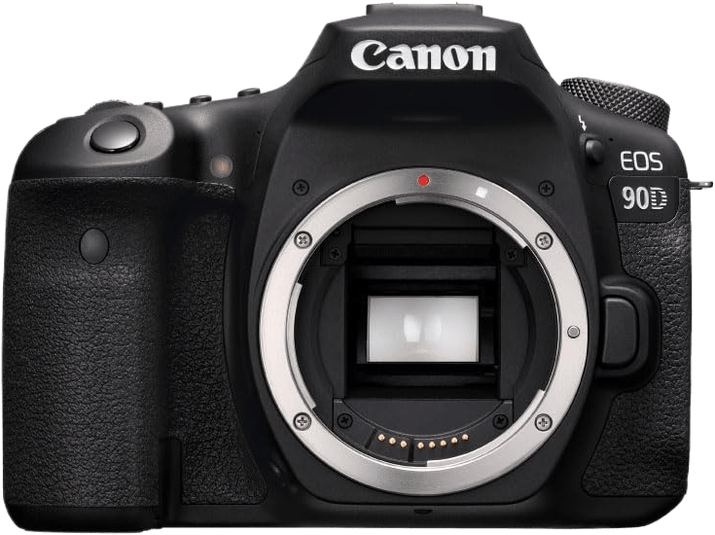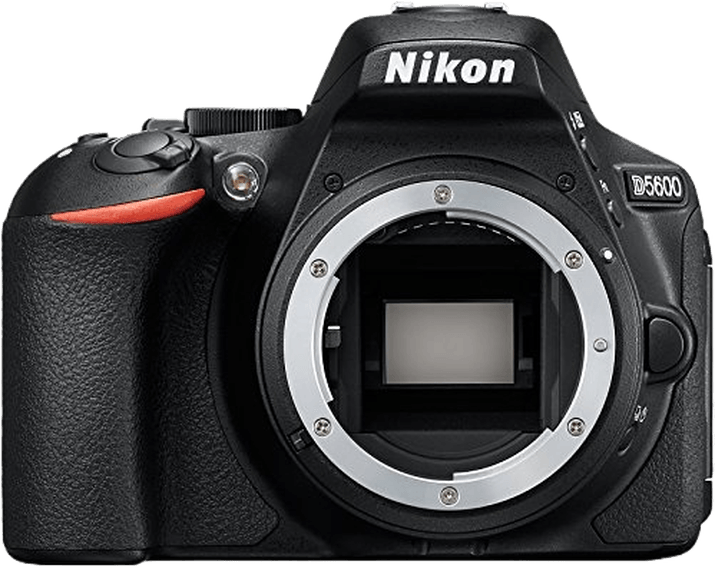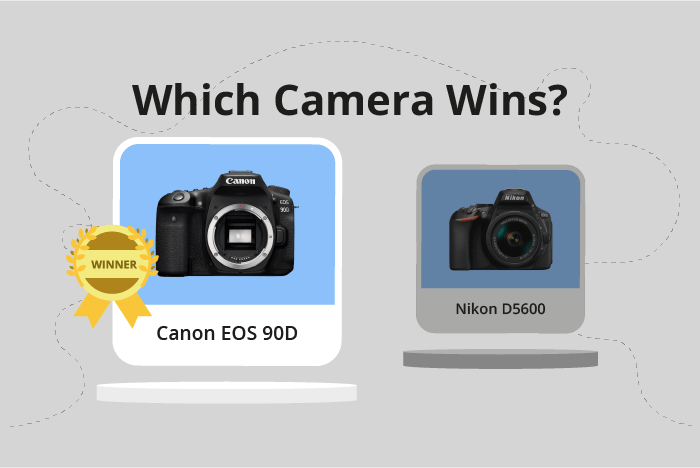Canon EOS 90D vs Nikon D5600 Comparison
Canon EOS 90D

Nikon D5600

The Canon EOS 90D edges out the Nikon D5600 with a score of 67/100 compared to 66/100. Both cameras are DSLRs released in 2019 and 2016, respectively. They share similar launch prices, with the 90D at $1199 and the D5600 at $700. In terms of size, the Canon EOS 90D measures 141 x 105 x 77mm and weighs 701g, while the Nikon D5600 is smaller and lighter at 124 x 97 x 70mm and 465g.
The Canon EOS 90D’s higher score reflects its superior performance and features. However, the Nikon D5600 has the advantage of being more compact and lightweight. This makes it a better choice for photographers who prioritize portability.
Considering the close scores and each camera’s unique strengths, the Canon EOS 90D excels in performance, while the Nikon D5600 offers greater portability. Ultimately, the choice depends on the photographer’s individual needs and preferences.
Canon EOS 90D vs Nikon D5600 Overview and Optics
The Nikon D5600 wins in optics, scoring 65/100, while the Canon EOS 90D scores 62/100. Both cameras share several specifications, such as having a CMOS sensor, APS-C sensor size, and no image stabilization. Additionally, they both use their respective brand’s lens mount: Canon EF/EF-S for the EOS 90D and Nikon F DX for the D5600.
The Nikon D5600 outperforms the Canon EOS 90D in terms of sensor performance, with a DXOMARK score of 84 compared to the 90D’s 58. This higher score indicates that the D5600 captures better image quality, especially in low-light conditions. Furthermore, the D5600 is equipped with an Expeed 4 processor, which contributes to its superior image processing capabilities.
On the other hand, the Canon EOS 90D has some advantages over the Nikon D5600. It boasts a higher megapixel count at 33 compared to the D5600’s 24.2, allowing for more detailed images. Additionally, the EOS 90D has a faster shooting speed of 10 frames per second, double the D5600’s 5 frames per second. This makes the 90D better suited for capturing fast-moving subjects, such as sports and wildlife photography. The 90D also utilizes a more advanced processor, the Digic 8, which helps improve overall camera performance.
In terms of optics, the Nikon D5600 takes the lead due to its superior sensor performance and image processing capabilities. However, the Canon EOS 90D offers a higher resolution and faster shooting speed, making it a strong contender for photographers who prioritize detail and action shots. Both cameras have their strengths and weaknesses, and the choice ultimately depends on the specific needs and preferences of the photographer.
Canon EOS 90D vs Nikon D5600 Video Performance
The Canon EOS 90D outperforms the Nikon D5600 in video capabilities, with a score of 91/100 compared to the D5600’s 70/100. Both cameras share some common features in terms of video performance, such as time-lapse functionality built in.
The Canon EOS 90D excels in several aspects, including a higher maximum video resolution of 4K (3840 x 2160) compared to the Nikon D5600’s Full HD (1920 x 1080). This results in significantly more detailed and sharper footage. Furthermore, the EOS 90D offers a higher maximum video frame rate of 120fps, allowing for smoother slow-motion videos compared to the D5600’s 60fps.
On the other hand, the Nikon D5600 does not have any specific advantages in video performance over the Canon EOS 90D. However, its lower score does not mean it is a poor camera for video recording. The Full HD resolution and 60fps frame rate are still suitable for casual videography and create good quality footage. The time-lapse functionality is also a useful feature present in both cameras.
Given the comparison of video capabilities, the Canon EOS 90D is the clear winner due to its higher video resolution and frame rate. This allows for more detailed and versatile video recording options. Meanwhile, the Nikon D5600 remains a decent choice for casual video recording, with its Full HD resolution and time-lapse functionality. However, for those seeking superior video performance, the Canon EOS 90D is the preferred choice.
Canon EOS 90D vs Nikon D5600 Features and Benefits
The Canon EOS 90D outperforms the Nikon D5600 in features, scoring 83/100 compared to the Nikon’s 72/100. Both cameras share several specifications, such as screen size, touchscreens, flip screens, GPS, WiFi, and Bluetooth capabilities. However, the Canon EOS 90D proves to be superior in certain aspects, while the Nikon D5600 has its own advantages.
The Canon EOS 90D has a slightly higher screen resolution of 1,040,000 dots compared to the Nikon D5600’s 1,037,000 dots. This difference in resolution provides a clearer and sharper display on the Canon EOS 90D, enhancing the user’s experience when previewing images and navigating menus.
On the other hand, the Nikon D5600 has a larger screen size of 3.2 inches compared to the Canon EOS 90D’s 3-inch screen. The larger screen offers more comfortable viewing and better image composition for the user. However, this advantage is minimal, as both cameras possess touchscreen and flip screen capabilities, making them equally versatile in various shooting situations.
Both cameras lack GPS, but their WiFi and Bluetooth functionalities enable photographers to connect and transfer files easily to other devices, such as smartphones and tablets. This shared feature adds convenience and efficiency to the users’ workflow.
Ultimately, the Canon EOS 90D takes the lead in features due to its slightly higher screen resolution, resulting in a better overall user experience. The Nikon D5600’s larger screen size is a minor advantage that does not significantly impact the camera’s performance. Therefore, the Canon EOS 90D is the better choice for photographers who prioritize features and user experience.
Canon EOS 90D vs Nikon D5600 Storage and Battery
The Canon EOS 90D outperforms the Nikon D5600 in storage and battery with a score of 48/100, compared to the Nikon’s 43/100. Both cameras have a single memory card slot and do not support USB charging. They accept SD, SDHC, and SDXC memory cards, with the Canon being UHS-II compatible and the Nikon UHS-I compatible.
The Canon EOS 90D excels in battery life, offering 1300 shots per charge with its LP-E6N battery. This is significantly more than the Nikon D5600’s 970 shots with its EN-EL14a battery. The longer battery life makes the Canon more suitable for extended shooting sessions.
The Nikon D5600 does not have any advantages in storage and battery compared to the Canon EOS 90D. Its lower score reflects its shorter battery life and lesser memory card compatibility.
Considering the storage and battery aspects, the Canon EOS 90D is the superior choice due to its longer battery life and better memory card compatibility. The Nikon D5600 falls short in these areas, making it less suitable for users who prioritize battery life and storage capabilities.
Canon EOS 90D vs Nikon D5600 – Our Verdict
Are you still undecided about which camera is right for you? Have a look at these popular comparisons that feature the Canon EOS 90D or the Nikon D5600:

